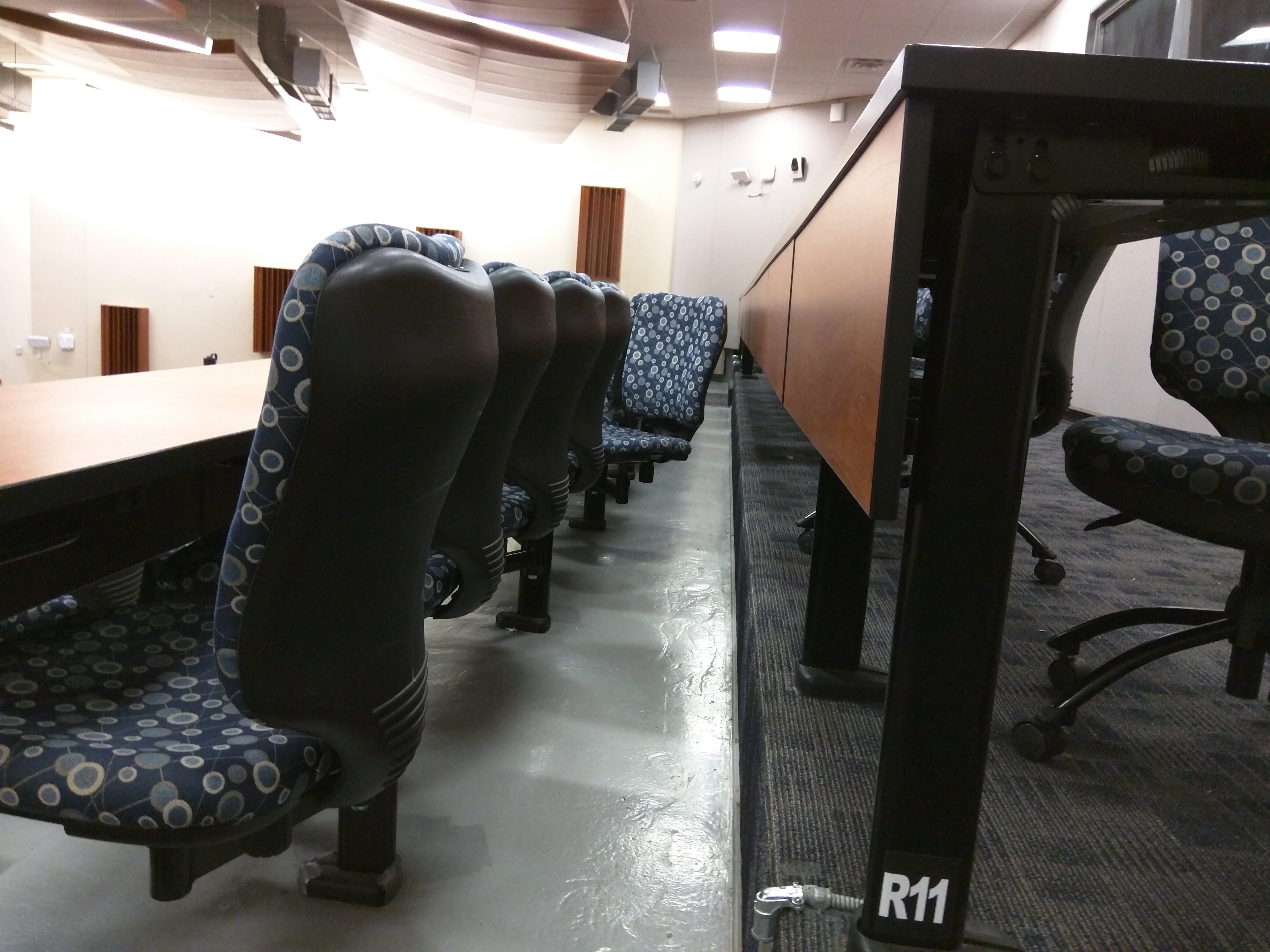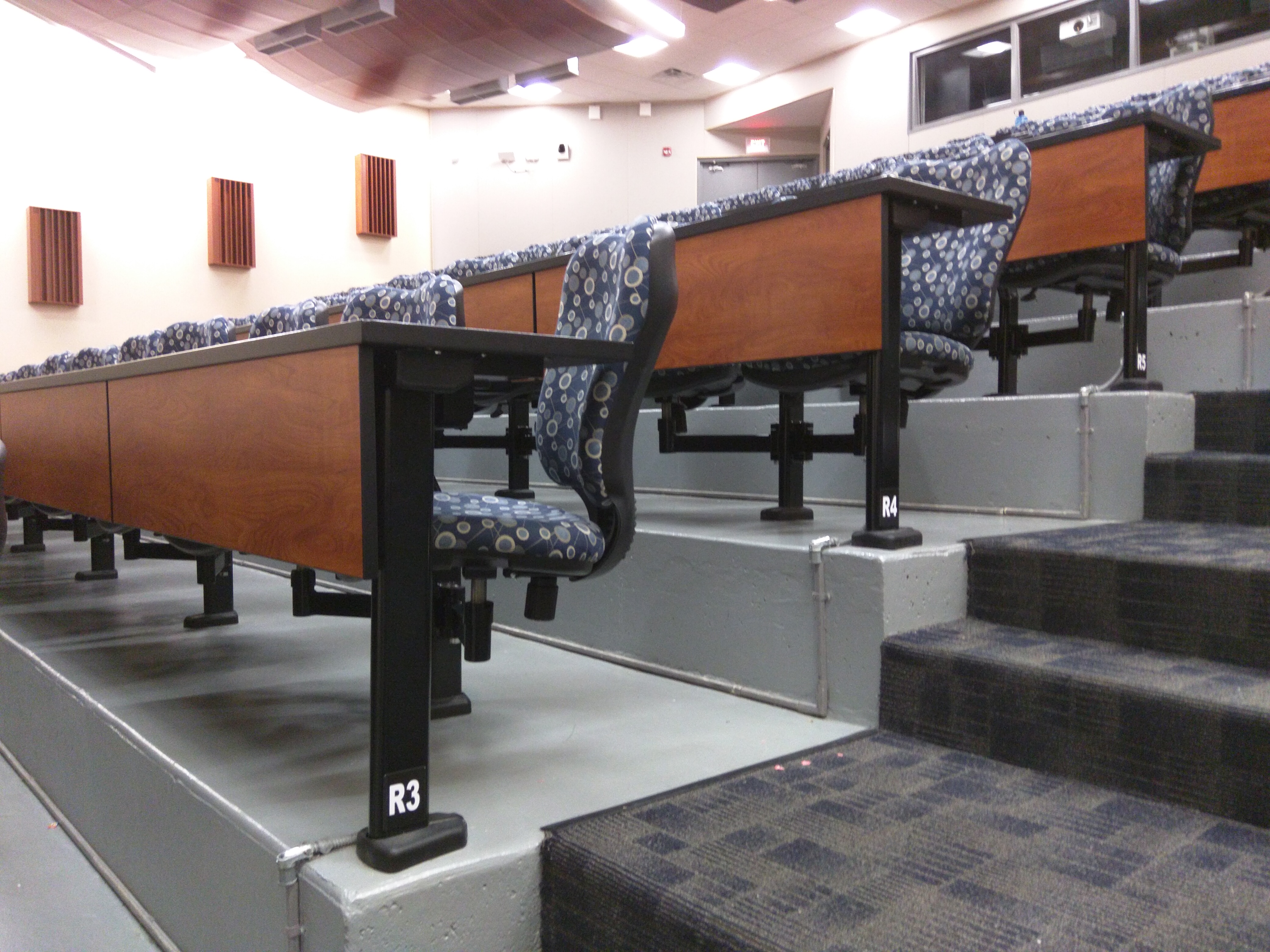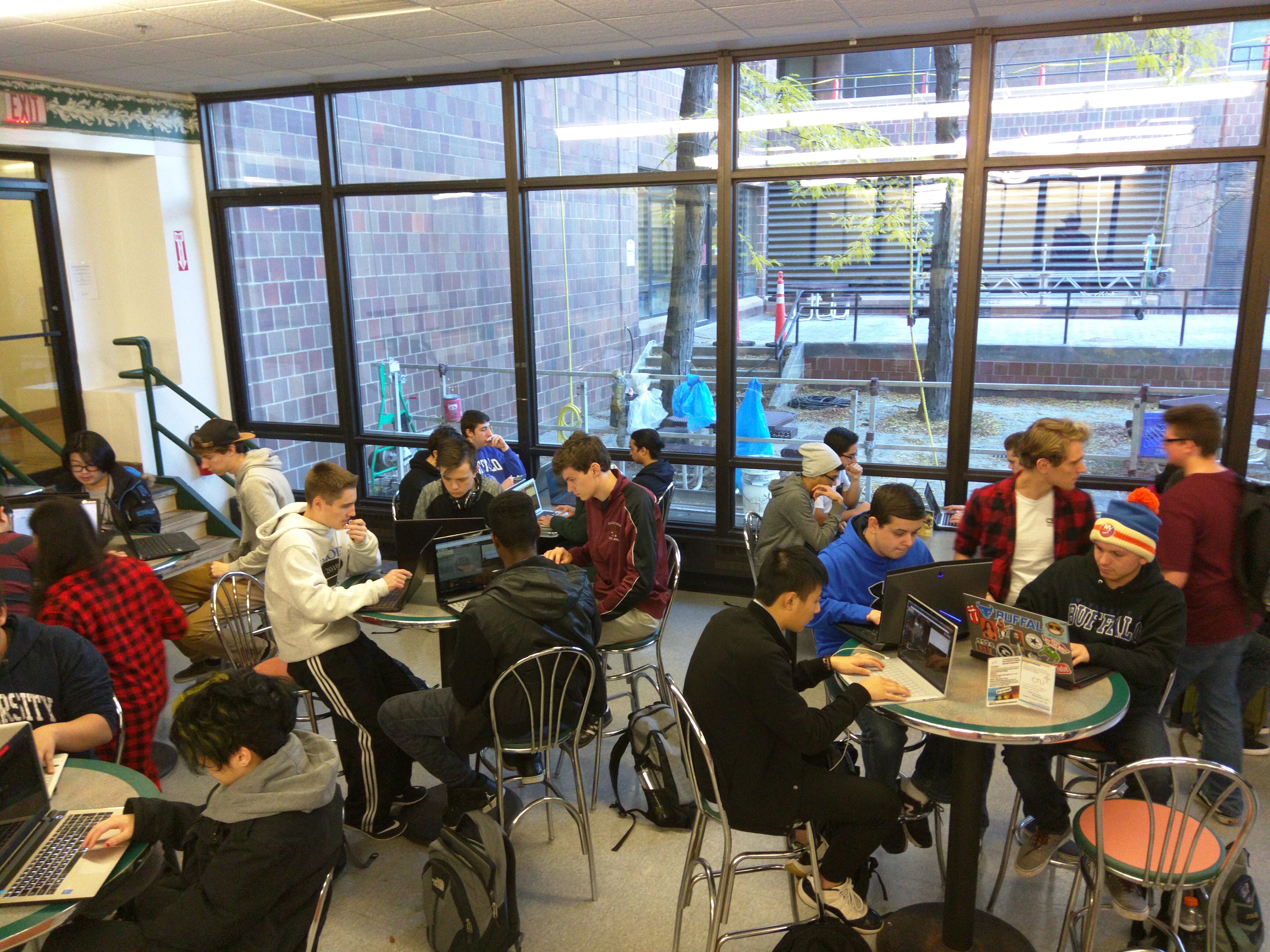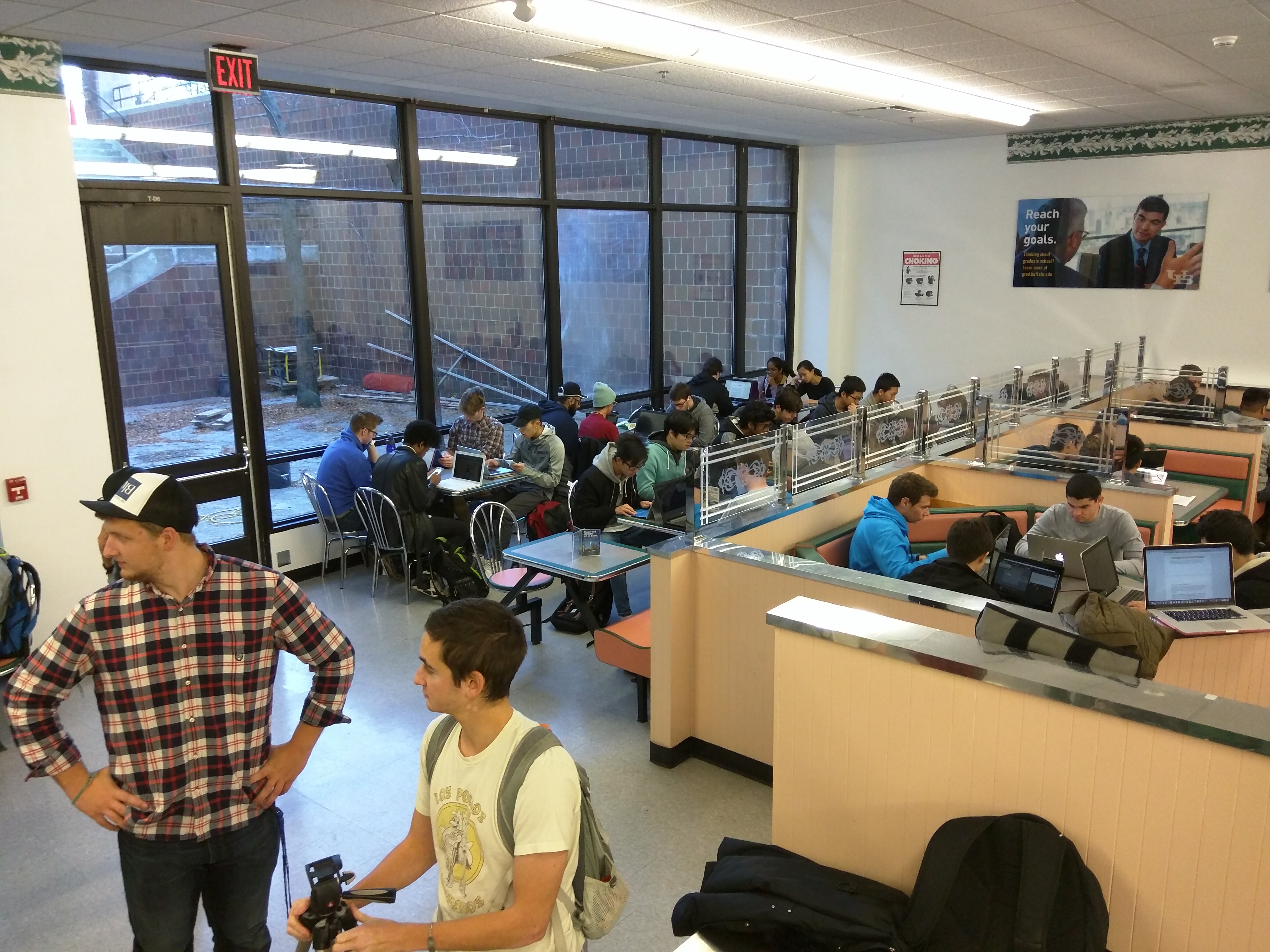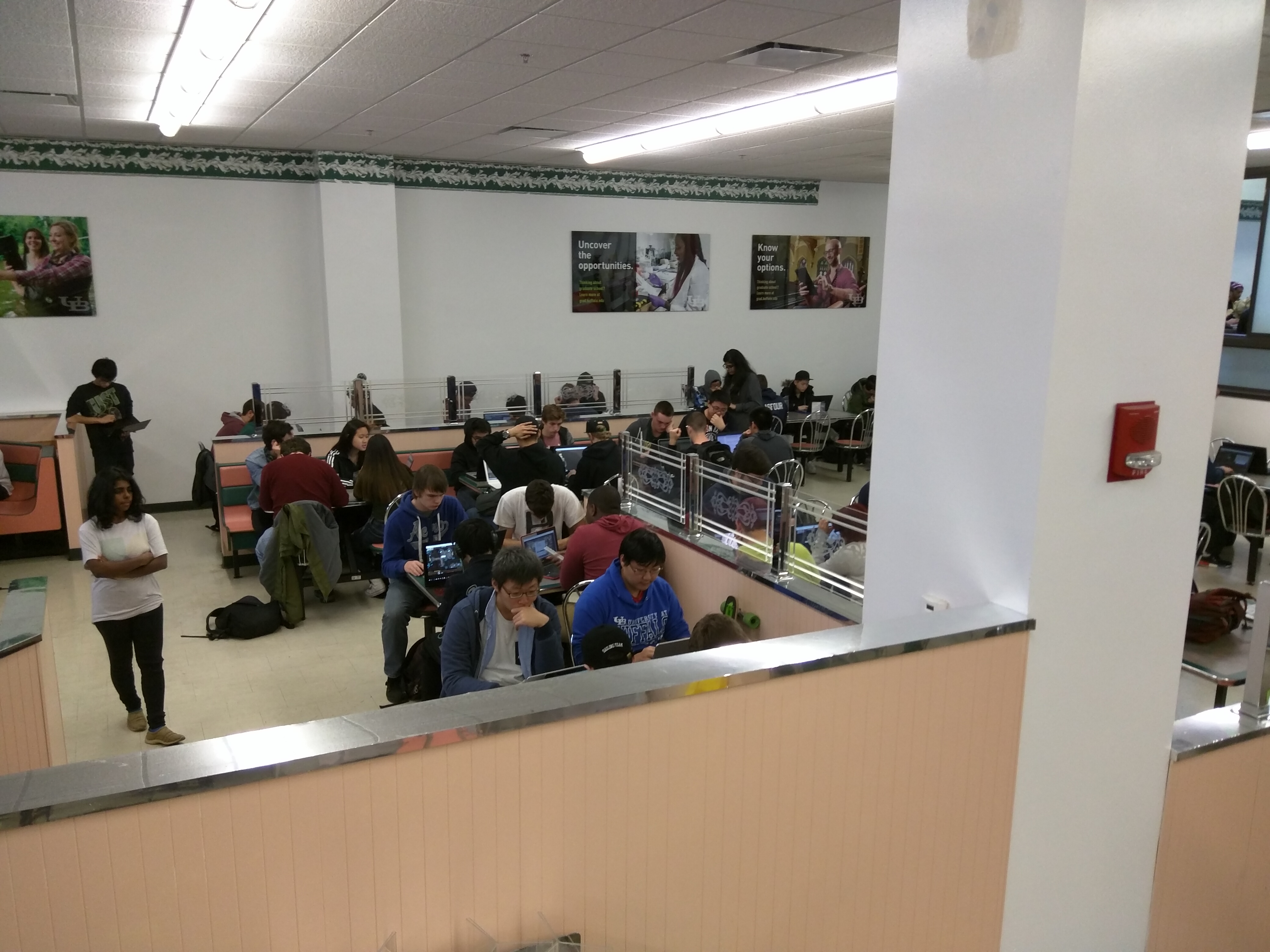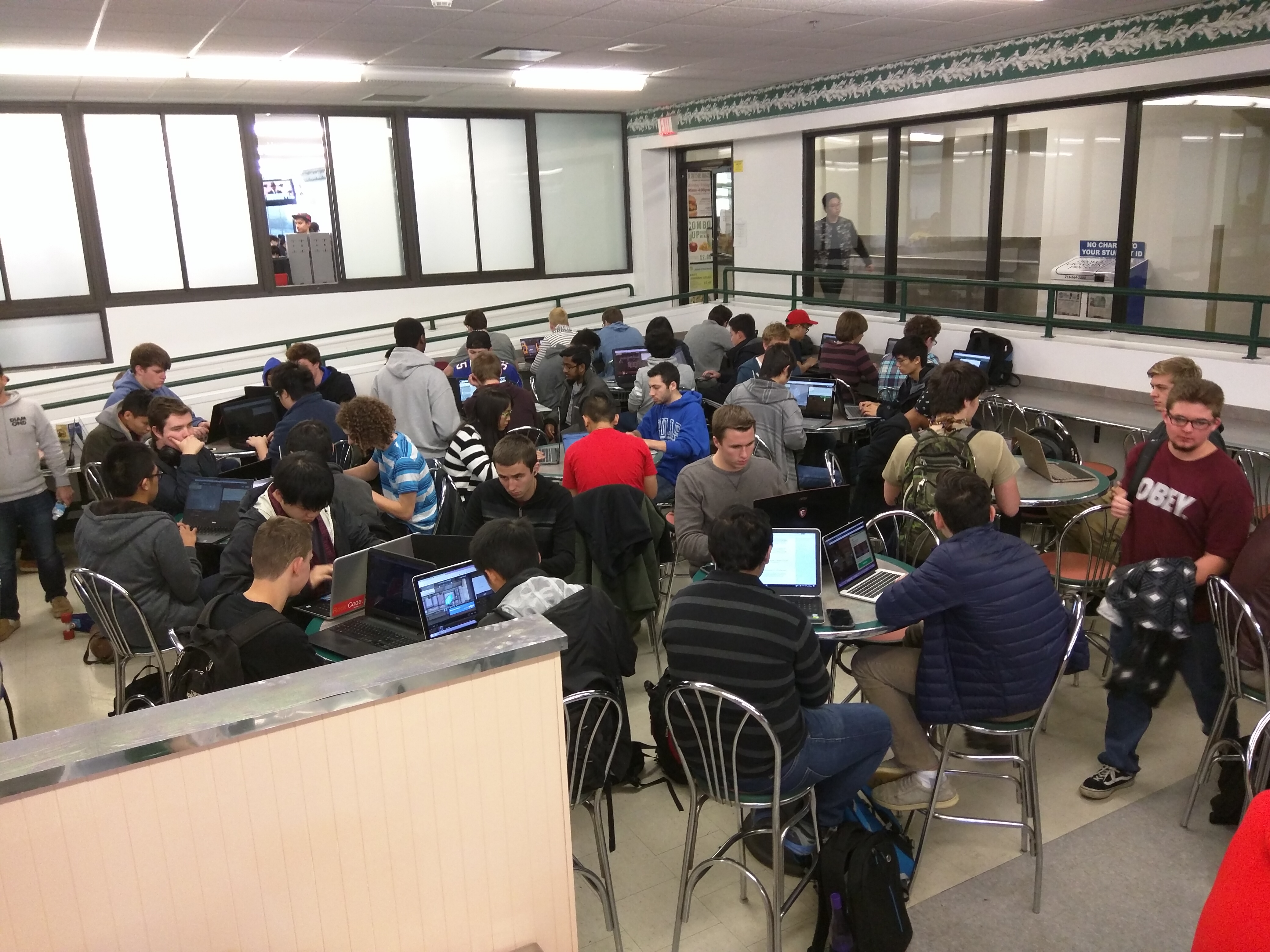Flipping a Large Class: Part 1
This semester I designed and deployed a new course on the internet in a flipped format. Despite nominally being a seminar, the course enrolled 440 students and met in two large groups. To pull this off, we had to overcome many challenges—some that were anticipated, others that caught us by surprise 1. Overall the course was a lot of fun. Here’s my attempt to share a bit of what we learned along the way.
This is the first part of a planned three-part series. Part one focuses on the infrastructure and management challenges of flipping a large course. Part two will discuss activity design and deployment. Part three will describe the video delivery system we built.
What Is A/Our Flipped Classroom?
To begin, just brief overview of the flipped classroom model for the uninitiated. In a flipped classroom you flip the lecturing out of class and flip the homework or course activities into class. The goal, as I understand it, is to align the things that benefit from supervision (assignments) with the hours that you supervise students (class). I also consider this approach a better match to what technology can do reasonably well (monitor video viewing) and can’t do yet (provide interactive help). I recorded a short explanation of the flipped classroom model using Legos borrowed from my friend Marlon.
In our flipped classroom, students watch around 20 5-minute lessons each week covering various topics related to how the internet works. Here’s the entire playlist, which ended up totaling 292 videos over 15 weeks. On Monday and Wednesday students attend a 50-minute meeting where they complete an activity in groups of two or four. We refer to these as activity sections to distinguish them from lectures. Course recitations are taught on Thursdays and Fridays and are taught by faculty—as required by the UB Seminar Program. Grading is primarily based on participation. Students receive credit for watching the short videos before the deadline and attending and participating in the activity sections. They are also required to record three new video explanations of course concepts as assignments.
Unfortunately, the only departments with enough faculty to teach these new required seminars are ones with too many faculty and too few students.Why this 440-student class is allowed to abuse the label "seminar" is a long story. Here’s the short version. UB decided that all freshman should have a 28-student seminar taught by a faculty member. Unfortunately, the only departments with enough faculty to teach these new required seminars are ones with too many faculty and too few students. UB refers to this, euphemistically, as "spare instructional capacity."
In computer science, we have the opposite problem: too many students and too few faculty. So initially we had two options. One was to find faculty volunteers to teach the 16 small seminars we would have had to offer to accommodate all incoming freshman. I tried that. It didn’t work. The second option was let our students take seminars on subjects like "The Writing of Food Politics" 2. Not that I have any problem with computer scientists having a broad-based liberal arts education, but that seemed like a missed opportunity. Particularly given that our department doesn’t have a "Wow, CS is cool!" course in the first year.
Luckily for us, several other departments convinced the seminar program to grandfather in existing large required courses. After some negotiations we received permission to hold 100-student lectures as long as they were accompanied by a seminar-size recitation 3. And that created an opportunity to rethink the seminar experience as a huge flipped classroom. Here’s a short video summarizing how the class works.
Step 1: Get a Room
Greg and I spent the months and weeks before the class launched anticipating and addressing lots of potential problems. But it wasn’t until a few days before class started that we encountered one of the biggest challenges to teaching a huge flipped class. All the classrooms we were assigned were completely unsuited to group activities.
Most current university classrooms are purpose-built for lecturing.The course was originally planned as three 100-student sections taught at the same time in neighboring classrooms. But when we visited those classrooms, we found seats bolted to tables, stadium seating, and narrow aisles. Most current university classrooms are purpose-built for lecturing. I guess that’s why they call them lecture halls…
Could we have used these classrooms? Sure. We could have limited the activity group size to two so that students could work side-by-side, the only configuration the rooms allowed. Our teaching assistants could have developed huge calves from hiking up and down the steep stairways and thin waists from squeezing through narrow aisles to reach groups that needed help. But that sounded terrible. So we went to look for other solutions.
And then—a miracle. We found Bert’s. Bert’s is an on-campus cafeteria. I’ve noticed it for years, mainly because it has that lovely cafeteria smell that you can’t miss as you walk by. Bert’s seats 500 students in two equal-sized rooms, mostly at tables of four. And at our seminar meeting times—9AM and 4PM—it is largely empty. Technically, half of the cafeteria is closed at 4PM, which was good because we had 340 students we wanted to bring down at that time.
Getting permission to use Bert’s was so easy it almost made me pinch myself:
Me: Can I bring 340 students down here at 4PM?
Bert’s Manager: Sure.
Me: Really?
Bert’s Manager: Sure.
Me: Do you really work at UB?
Bert’s Manager: Sure.
A few days later the same agreeable manager allowed us to use half of Bert’s at 9AM, when it’s open and serving breakfast. We only have 99 students at that time, which doesn’t interfere with early-morning diners. And that was that.
To guide students to where their group is located, we created an online seating chart. Students are assigned to new groups each week via email. When they arrive in class, they use this to locate their table. The first few times we tried this, class started with 10 minutes of pure chaos. But after a few iterations, students got the hang of it. Past that point, they find their groups quickly and get started. Our fantastic undergraduate teaching assistant circulate constantly among 12 or 16 students to keep them on task and answer questions.
The lecture model is literally physically embedded into today’s campuses.There’s something incredibly exciting about having hundreds of like-minded students packing the same space and working in close proximity. But the way it came about was a fortunate accident, and it really opened my eyes to something that should have been obvious to me. The lecture model is literally physically embedded into today’s campuses. That makes running large activity-based or flipped classes extremely challenging. I’ve heard that some universities are tearing out lecture halls and trying to reuse the space, but you can imagine how hard that would be.
Until campuses are physically redesigned to meet the needs of activity-based classes, finding a suitable room will be a major challenge. Next time I teach this class—which will not be at UB—it will be the first thing I’ll do.
Step 2: Get Your Coding Hand Dirty
The physical plant isn’t the only part of the university that is unprepared for the challenge of flipping a large class. The electronic tools are not anywhere close to being up to the task either. So for your sake I hope that you have a coding hand—and that it is fairly dirty. Because you’re going to need it.
Consider making class announcements. With 340 students working in two separate large cafeteria rooms, it becomes impossible to use the beginning of class as an broadcast period. There is no "front" of the room to deliver them from in the typical fashion. Mounting a table and shouting at the top of my lungs is something that I’m not interested in doing 4.
For that reason, email becomes a much more important way of communicating with students. So let’s say you want to send an email announcement to the entire class. That would seem simple, right? Wrong.
Imagine trying to do this five minutes before a class you need to cancel due to a power outage.At UB, sending a class email not a simple task. First, I have to log in to a broken course management tool. That log in has an obvious race condition and so it fails about 10% of the time. Then you realize that the course management system has needlessly broken your class into four chunks that need to be emailed separately. Then you have to remember that the system refers to email as "notifying" students for no particular reason. Next, fight your way through a few more slow, crashy, and completely mobile-unfriendly screens. Now you find a web form encouraging you to generate an email with the subject "<From the desk of Geoffrey Challen>". Yes—those brackets are in the original. Now, repeat the whole process three more times. Imagine trying to do this five minutes before a class you need to cancel due to a power outage. No thanks.
But hey—I’m a computer scientist. I’m familiar with cutting-edge software packages like Mailman 5, which allows me to create and manage email lists. All I need is a programmatic way to get an up-to-date list of all the email addresses for the students in my class. That should be easy, right?
Wrong again. As far as I can tell, there is no API allowing faculty to retrieve updated information for students in their class. And so not only can you not generate email lists for sending mass email messages, but good luck generating personalized emails or seating charts for exams, creating accounts allowing students access to class websites or forums, or completing any other task that simply needs an up-to-date list of the current students in the class.
Luckily, I was familiar with these challenges from teaching other large
courses.
I manually downloaded spreadsheets with student information a few times and
used them to start the process of updating various course resources.
But I finally broke down and did what any good computer scientist would do:
wasted several days completely automating the process.
You don’t want to know the details and I don’t want to share them with you,
but suffice to say that gory may not be a strong enough word.
But after several minutes of casperjs-enabled web
interface banging, I have a JSON document with student names, email
addresses, other metadata—even base64 encoded photos.
But that tool is only one part of a complete set of tools that I’ve had to develop this semester for doing flipped-classroom administration. That toolchain now totals 28 JavaScript executables and around 2000 non-commenting lines of code. It includes individual script that perform the following tasks:
-
Update various Mailman mailing lists including ones that reach all students, students by their official class assignment, staff, and recitation instructors.
-
Create accounts using Auth0 for students allowing them to use the main video delivery website and the Discourse class forum. No—I do not want to figure out my university’s authentication system and get permission to use it. I just want something that works, and Auth0 does.
-
Randomly assign students to groups with some demographic-based meddling.
-
Assign undergraduate teaching assistants to table groups in ways that respect the geometry of our flipped classroom.
-
Generate customized emails informing students of their group assignment and providing the activity description.
-
Parse and correct the human-entered attendance records—which contain a lot of mistakes—and calculate that component of each student’s grade.
-
Access the video delivery database to record how many videos a student watched before their deadlines and calculate that component of their grade.
-
Integrate with the HotCRP system that we are using to review videos and calculate that component of each student’s grade.
-
Combine all grading components to generate custom grade emails and export the data into formats allowing me to set midterm grades.
I don’t want to toot my own horn here. But I don’t think it’s going too far out on a limb to say that most if not all history faculty could not have built these tools. I’m not sure that some of my own computer science colleagues could—or would have bothered.
So not only do large flipped classrooms create physical infrastructure challenges, they also create technological infrastructure ones as well. I was fortunate to have the skills required to address these challenges, as well as some experience with similar tools from previous courses.
Next Time
We were really luck that Bert’s worked out for us this semester. Had the class been held at a time when the cafeteria was busy, we would have been out of luck. Next time I’d find a good space first—probably Bert’s again at UB, since there just aren’t many options—and schedule the course around its availability.
Hopefully flipped and activity-based courses will become more common. But until then, I don’t anticipate the tools we needed being part of standard deployed course management software. Remember—at this point even emailing all of the students in the class is painful, a mode of communication that becomes increasingly important in a flipped class. Luckily now I have a lot of these tools built. If you’re starting from scratch I’d suggest thinking about how you are going to handle some of these management challenges. That probably starts with determining how to integrate with the tools you do have.
In the next installment of this series of posts I’ll discuss the challenge of formulating, deploying, and supervising two dozen new course activities.
Post-Evaluation Update
I received the course evaluations (PDF) for CSE 199 today (12/27/2016). I’ll discuss aspects of the evaluations in future posts. But I was surprised at how negatively students seemed to react to meeting in Bert’s cafeteria. The pointed out that it was crowded (always true), dirty (sometimes true), lacked power outlets (always true), had poor Wifi (always true, but only sometimes a problem), and was hard to get in and out of (always true). There were some that seemed to find it unprofessional or unseemly that we were meeting "in a cafeteria", rather than in some more official setting.
Obviously I didn’t expect students to understand the problems with the other options. Had we met in a lecture hall I suspect that the evaluations would have contained a different set of room-appropriate complaints. But to me this underscores the need for universities to provide better spaces for holding large activity-based classes. Bert’s is far from ideal, for all of reasons that students identified. It’s also probably pretty close to the best you can do at UB right now.

